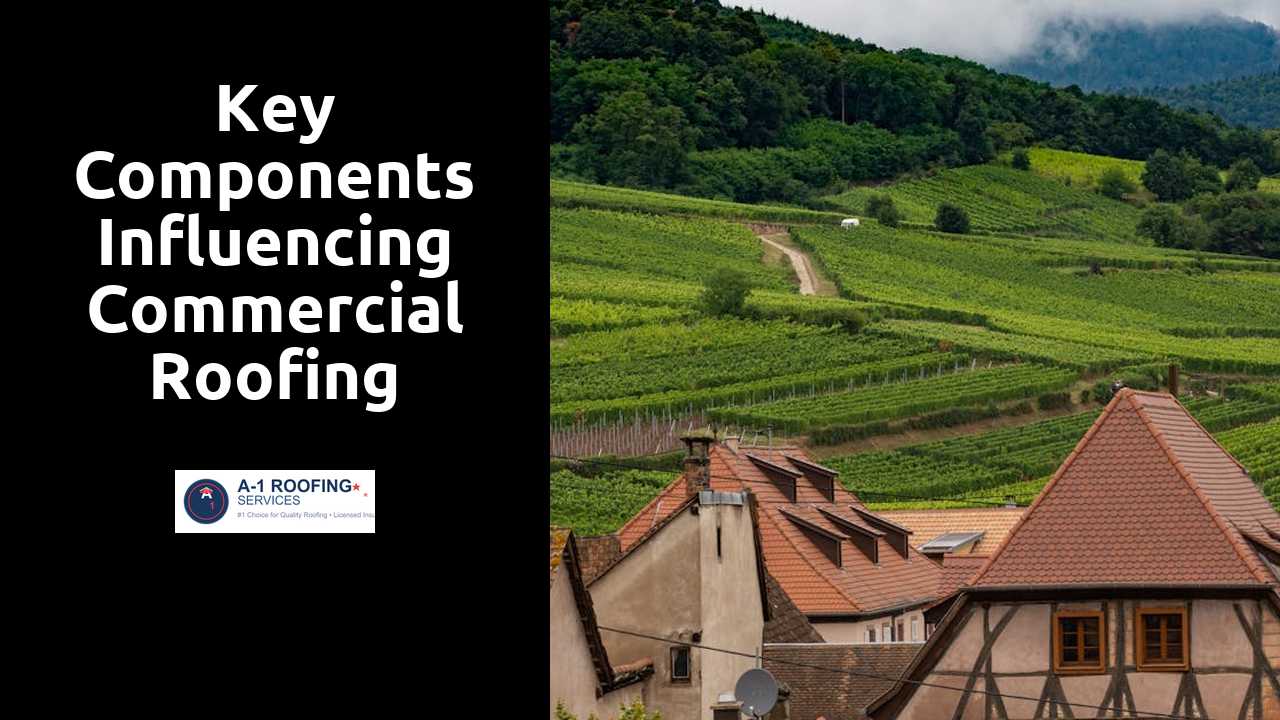
Key Components Influencing Commercial Roofing Pricing
Table Of Contents
Roof Condition
The state of a roof plays a critical role in determining pricing for commercial roofing projects. A roof in good condition might only require minor repairs, which can be more cost-effective than a complete replacement. However, if the roof shows significant signs of wear or damage, the expense of replacement can escalate quickly. Factors such as age, material type, and existing damage all contribute to the overall assessment.
Understanding the necessary measures to address the roof's condition is essential for accurate cost estimation. Professional inspections typically reveal issues that may not be visible to untrained eyes. A thorough evaluation can help building owners make informed decisions, weighing the advantages of repair against the necessity for a full replacement. This detailed analysis is crucial for ensuring that budgets align with the true state of the roofing system.
Navigate to this website to learn more.
Assessing Repairs versus Replacement
When evaluating a roof's viability, a thorough inspection is essential. Assessing the extent of damage helps determine whether repairs are sufficient or if a full replacement is necessary. Consider factors such as age, material, and the overall structure of the roof. Minor issues like small leaks or missing shingles might only require localized repairs. In contrast, significant damage, such as widespread leaks or structural degradation, often leads to the recommendation for replacement to ensure long-term integrity and safety.
Cost plays a crucial role in the decision-making process. While repairs may seem more budget-friendly initially, they can accumulate over time, especially if recurring issues arise. A replacement may have a higher upfront cost, but it can yield savings in the long run through reduced maintenance and enhanced energy efficiency. Home and business owners must weigh these financial implications alongside potential risks to safety and property value when determining the best course of action for their roofing needs.
Warranty and Insurance
A comprehensive warranty can significantly influence the overall cost of a commercial roofing project. Typically, these warranties cover material defects and workmanship, offering peace of mind to property owners. The length of the warranty often correlates with the quality of the materials used and the reputation of the roofing contractor. Longer warranties usually indicate higher durability and reliability, which can justify a higher initial investment.
Insurance coverage is another critical factor when considering commercial roofing costs. Different insurance policies may cover various aspects such as damage during installation, liability for accidents, and damage arising from severe weather events. Property owners should understand the terms and limitations of their insurance to avoid unexpected expenses that could arise from coverage gaps. A thorough review of both warranty and insurance can lead to more informed financial decisions when planning a roofing project.
Impact of Warranty Length on Pricing
The length of the warranty can significantly influence the overall cost of a commercial roofing project. Longer warranties often provide more extensive coverage, which can lead to higher pricing. This additional cost reflects the roofing contractor's confidence in the materials and installation processes used. Clients may view longer warranties as an investment in long-term durability and protection.
Conversely, shorter warranties may come with lower initial costs but might not offer the same level of assurance. Businesses often weigh the benefits of a robust warranty against their budget constraints. Understanding these dynamics can help decision-makers choose a roofing system that aligns with their financial and operational needs while considering potential long-term costs tied to repair or replacement.
Weather Considerations
The impact of weather on commercial roofing pricing cannot be overstated. Extreme temperatures can affect the materials used in construction. For instance, roofing systems may require different adhesives or membranes in colder months compared to summer. Additionally, wet conditions can delay installation schedules, leading to increased labor costs as workers adapt to unpredictable weather patterns.
Seasonal variations play a significant role in both installation and maintenance costs. Spring and fall often provide optimal conditions for roofing projects, with milder temperatures and lower chances of precipitation. Conversely, winter and summer may impose limitations; roofing contractors might charge more during peak seasons when demand rises. Understanding these seasonal influences helps businesses budget more accurately for their roofing needs.
Seasonal Factors Affecting Installation
Weather patterns play a significant role in the scheduling of commercial roofing projects. Certain seasons bring about challenges that can delay installation. Heavy rains during the spring can make rooftops slippery and unsafe for workers. Winter months introduce cold temperatures, which can affect the materials used in roofing systems.
Additionally, summer heat can pose risks for both workers and roofing materials. High temperatures may lead to premature curing of adhesives and materials, resulting in compromised integrity of the roofing system. These seasonal fluctuations not only influence installation timelines but can also affect the overall pricing of the project. Contractors may adjust their quotes based on the anticipated challenges posed by the time of year.
Related Links
The Impact of Roof Size on Commercial Roofing BudgetsHow Material Choices Affect Commercial Roofing Expenses